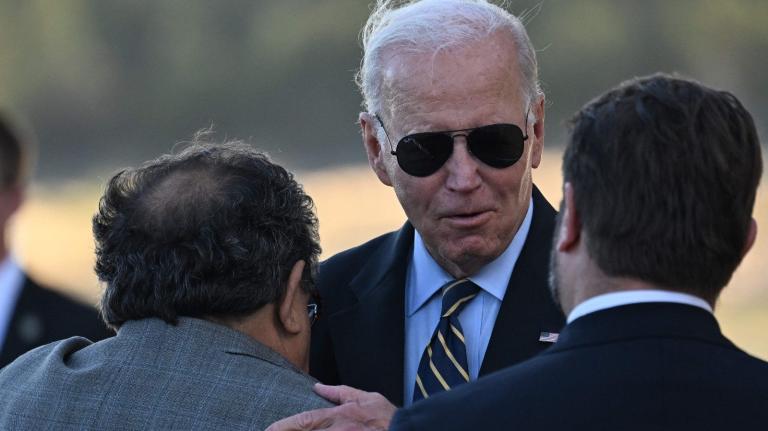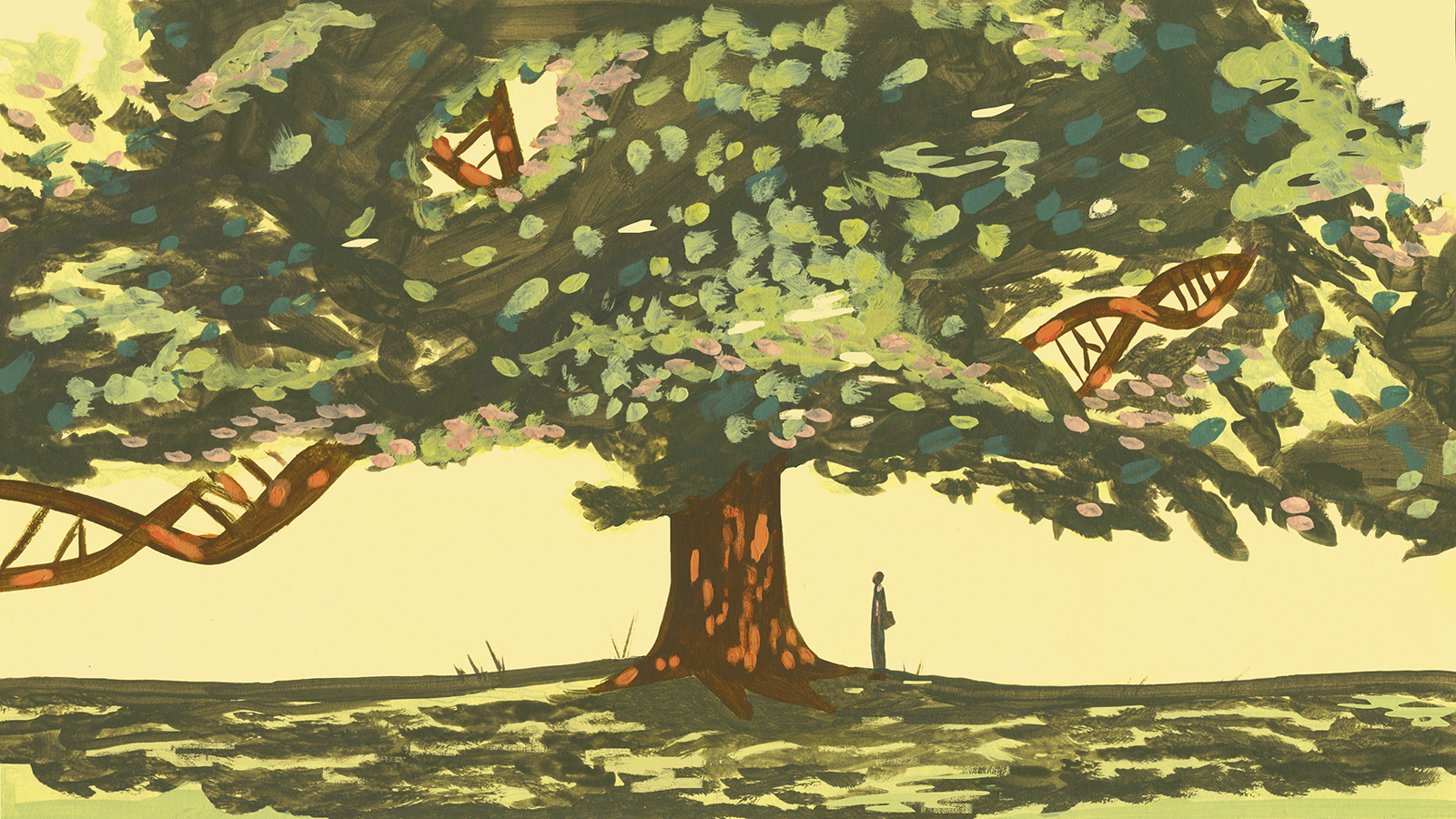This story is co-published with Arizona Luminaria and is part of The Human Cost of Conservation, a Grist series on Indigenous rights and protected areas. This transcript has been edited for length and clarity.
On a breezy spring day, Lorraine Eiler, a member of the Hia-Ced O’odham tribe, walked with me around the border of Quitobaquito Springs — a strawberry-shaped oasis in the Sonoran Desert near Pima County, Arizona. Her family has lived in the area for generations.
“If you do research on Quitobaquito, the majority of times you will read about the cattlemen that lived here in the area, about the people that went through Quitobaquito,” she said. “You hear nothing about the fact that it’s an old Indian village. It was abundant. Now, it’s just … well, you see what it looks like.”
The first thing you notice most about Quitobaquito Springs is the trees. It’s the only source of water for miles in the desert and the lush vegetation around it is stark against the dry tan and khaki landscape and occasional organ pipe cactus. The second thing you notice: the border wall, 30 feet tall, just feet from the water’s edge. I asked Eiler how the landscape compares to her early memories of the site.
“Barren,” she said. “Very, very barren.”
For thousands of years, people have used Quitobaquito as a place to trade, to grow food, and to rest. The springs also provided water for animals in a region where it’s hard to come by. Quitobaquito’s springs are still sacred to O’odham people today and several of Eiler’s relatives, for example, are buried here.
“It has always been a place of refuge, a place of survival for anybody and anything that’s ever crossed through that territory,” said Amy Juan, a member of the Tohono O’odham Nation and the Tohono O’odham Hemajkam Rights Network, a collective of college students and youth focused on issues impacting Tohono O’odham peoples.
In the 1900s, the springs and the surrounding area were selected by the U.S. government for conservation and given one of the highest levels of environmental protection in the world. But today, Quitobaquito’s sacred springs are drying up. So what went wrong?
Quitobaquito Springs is part of the O’odham people’s traditional homelands — especially the Tohono and Hia-Ced O’odham nations. Before it was part of a National Park, before Arizona became a state in 1912, and even before there was an international border, the springs were really more like a marsh. Water flowed into the wetlands, feeding the gardens of squash, corn, and melons in the middle of the desert.
But settlers, warfare, and political decisions in the 1800s dispossessed the O’odham of their lands and carved the region into pieces. First, the U.S.–Mexico border split O’odham communities, separating families and cutting people off from their lands. Decades later, the U.S. government seized O’odham lands by congressional act, and, without a treaty, pushed the Tohono O’odham onto a reservation. Meanwhile, lawmakers created more policies intended to protect Quitobaquito’s fragile ecosystem. In 1937, President Franklin Roosevelt used the newly claimed lands surrounding Quitobaquito Springs to create Organ Pipe Cactus National Monument.
In the early days of the National Park Service, parks were mostly created with entertainment, sightseeing, and aesthetic beauty in mind. The agency believed that these areas should be kept wild, and protected from human interference.
But what they missed was that places like Quitobaquito were already a product of thousands of years of human maintenance — and that the park still had people in it. For instance, the Oroscos, a Hia-Ced O’odham family, were living in Quitobaquito Springs at the time when the park was created. They stayed in the area long after many tribal members were pushed out.
The family’s animals, buildings, and machinery didn’t match the agency’s vision of a wild, peopleless park. Finally, after decades of pressure, the National Park Service purchased the land for $13,000, bulldozed the Oroscos’ home, dug out a bigger collecting pond for water from the spring, and built a parking lot nearby to attract visitors.
“There was this idea that you would take the people out of living in these protected spaces, but they could come and they could visit and they could enjoy the natural environment, and we would protect that environment up to an extent,” said Rebecca Tsosie, an attorney and professor at the James E. Rogers College of Law at the University of Arizona. “But Indigenous presence is vital to the stewardship of the land.”
Without livestock to graze by the water’s edge, cattails invaded the pond, decreasing water flow. The decrease in water flow led to sediment build up, and in 1962, that increased sediment prompted park officials to dredge the pond. But dredging made the water too deep and too cold for the Sonoyta pupfish, one of the two endangered species endemic to the area. This forced the Park Service to build a kind of shelf in the pond so the fish could live in warmer waters.
At the same time, the nearby parking lot meant visitors had easy access to the water, and one park visitor released a golden shiner into the pond — a fish so well suited to the springs it started outcompeting the pupfish and driving it toward extinction. Once park officials realized this, they removed the pupfish, poisoned the pond to get rid of the golden shiners, refilled the pond, and then put the pupfish back in.
On a recent visit to Quitobaquito, I managed to spy a few pupfish — brown slivers of movement in the shallow waters of the springs. Tyler Coleman, a biologist and researcher with the National Park Service, told me that one of the biggest threats to the species today is low water levels. Ever since the 1990s, which saw a long term drought in the region, Quitobaquito has been drying up.
“So the little water that is produced in the Sonoran Desert is really valuable,” he told me. He pointed to the main springhead, a trickle of water which he described as a crack in the side of the mountain. “Any amount lost is going to be a problem.”
The decline of the springs has been attributed to drought, climate change, and the expansion of nearby farming that taps into the natural underground aquifers.
Then the border wall came.
In 2020, the U.S. government began building the controversial wall along the U.S.–Mexico border, 30 feet high, that cut across the entire southern edge of the park. Crews drilled for groundwater near the declining springs that they used to make cement.
“Unfortunately, during that period of time, the water levels started going down and the pond itself right in the center just became dry, which was something new,” Eiler said.
It’s not entirely clear if border wall construction caused water levels to drop. And we may never know, because the Trump administration waived all environmental assessments in the name of national security.
“The United States has some of the best environmental laws of any nation in the world,” said Tsosie. “But on the border, they wanted a full-scale, speedy construction of the border wall. So they bypassed all of those things.”
In 2022, the Park Service relined the pond, with support from the International Sonoran Desert Alliance, a nonprofit organization that Lorraine Eiler works with. People from U.S. government agencies and the Tohono O’odham nation worked to delicately scoop the turtles and pupfish into holding tanks until the lining was replaced and the pond was refilled.
But restoration is ongoing and it’s not yet clear whether or not these efforts will restore water levels — or how long that fix will last.
“Whatever was here is gone,” Eiler said. “We can try to make it. We’ll never get to the point of what it used to look like. And it all depends on water.”
Around the world, in the face of biodiversity loss and climate change, there are calls to expand protected areas like Quitobaquito — though, as the springs show, a designation doesn’t guarantee protection. Last December, 196 countries agreed to “30×30,” a global goal to conserve 30 percent of the world’s lands and waters by 2030. The U.S. has its own version of that project, called “America the Beautiful.” Many of the areas targeted for protection under these policies are in Indigenous territories or on lands integral to Indigenous peoples’ livelihoods, and many have not sought consent from those communities or integrated their knowledge or practices in protection plans.
“I think a lot of the border violence, a lot of the impacts on the Tohono O’odham, those are invisible when you’re visiting [Quitobaquito],” Tsosie said. “That cultural landscape is part of the environmental landscape. And we need to steward that and protect it and care for it just as we do those endangered species.”
Amy Juan agrees that Quitobaquito needs to be protected, but from a country that has caused more harm to the springs than good, not from the people who have cared for it for generations.
“Sometimes it feels out of our hands,” she said. “But what we can control and what we can continue to do is make sure that we maintain these traditions, these ceremonies, these connections, because once we let go of them, once we lose them, once we don’t maintain them, that just continues to hurt who we are as O’odham. We’re desert people. We have to take care of all these things that make us who we are.”





